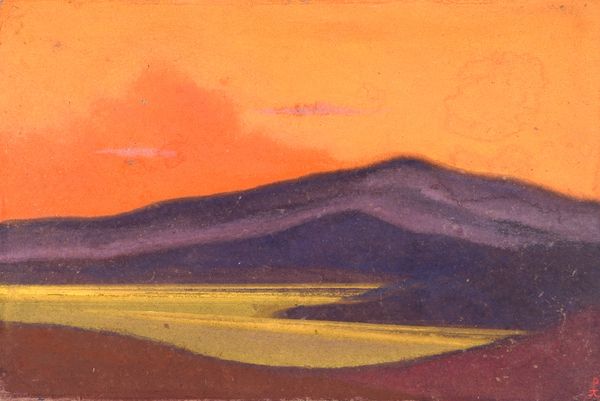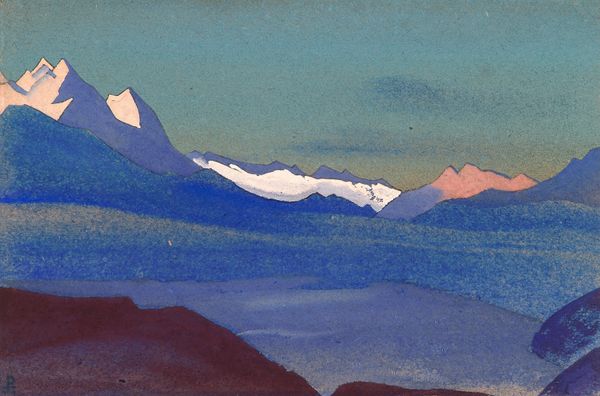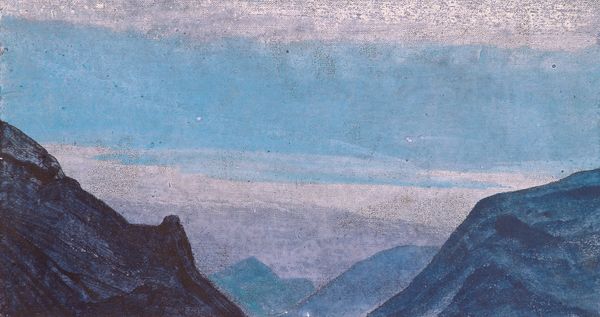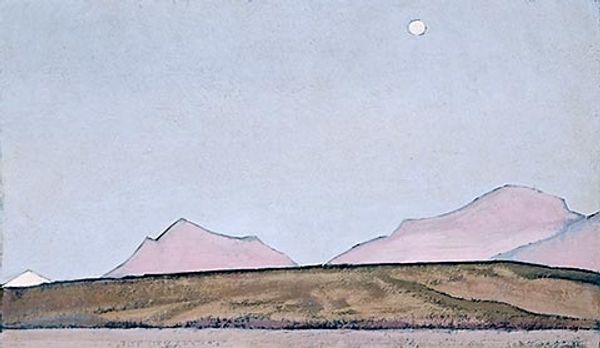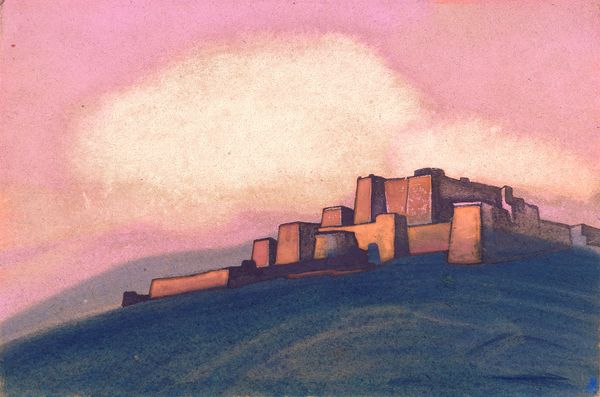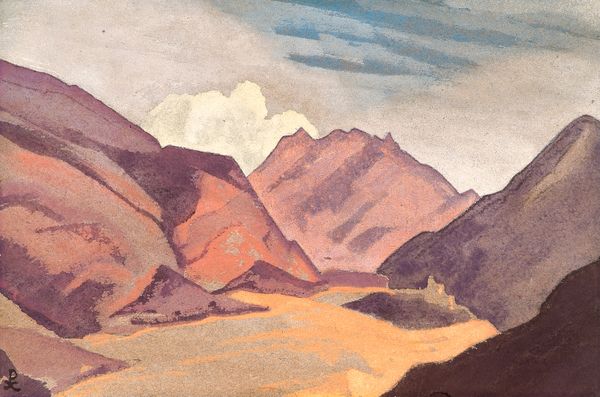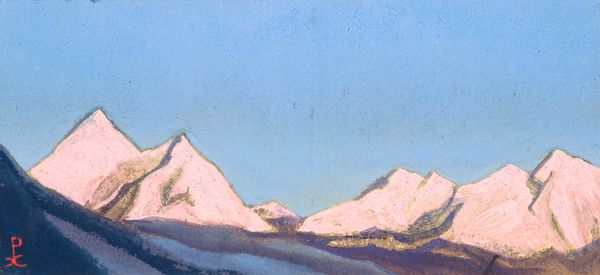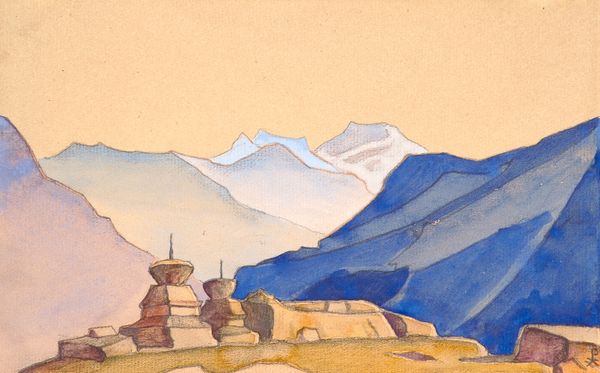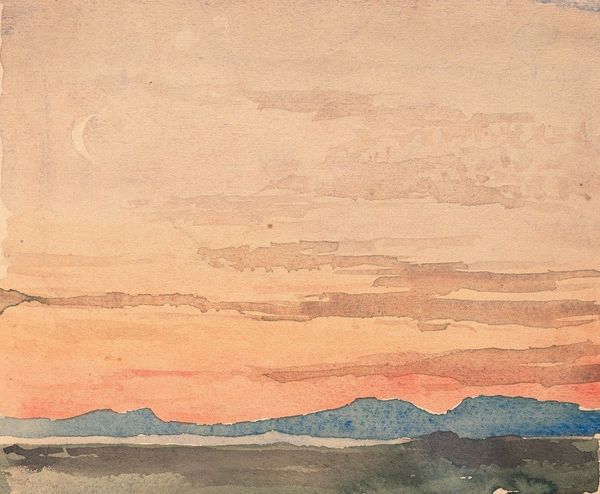
watercolor, architecture
#
sky
#
water colours
#
landscape
#
watercolor
#
coloured pencil
#
underpainting
#
mountain
#
arch
#
cityscape
#
architecture
Copyright: Public domain
Editor: So, this watercolor, "Mongolian Yurtas" by Nicholas Roerich, painted in 1936, presents these simple, almost elemental forms under a vast sky. The yurts themselves seem very vulnerable in the landscape. How do you interpret this work? Curator: These "vulnerable" yurtas, as you describe them, speak volumes. Roerich, though a Russian artist, was deeply invested in Eastern cultures and philosophies. He wasn’t merely painting a landscape; he was engaging with symbols of community, spirituality, and cultural memory. Editor: Cultural memory? Curator: Yes, think about the yurt itself. It's not just a dwelling; it’s a symbol of nomadic life, of adaptation and resilience in the face of a challenging environment. Its circular form could even be interpreted as a mandala, a representation of the universe and inner peace. Do you see how the subdued palette reinforces that sense of quiet contemplation? Editor: I do. It almost feels timeless, like this scene could exist in any era. Curator: Exactly! Roerich often used recurring visual motifs – mountains, clouds, simple dwellings – to convey a sense of continuity across cultures and through time. The mountains, for example, resonate deeply with ideas of spiritual aspiration and permanence. Roerich painted the Himalayas for years. What sort of feeling is he invoking by placing these architectural structures at the base of such large landforms? Editor: So, it’s not just about the visual, it's about the history and cultural weight embedded within the imagery. Curator: Precisely. It's about Roerich's attempt to portray an archetype of human-environment harmony. This harmony is built by cultures all across the earth over countless generations. Editor: I see it now. It's a much richer scene than I initially realized. Thanks!
Comments
No comments
Be the first to comment and join the conversation on the ultimate creative platform.
